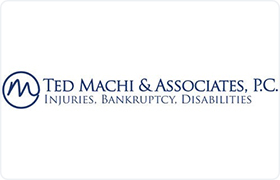Dallas Bankruptcy & Debt Lawyer, Texas, page 2
Sponsored Law Firm
-
 x
x

Click For More Info:
-
Machi & Associates, P.C.
1521 North Cooper Street Suite 550 Arlington, TX 76011» view mapAccident & Injury, Bankruptcy, Social Secuirty We Fight So You Don't Have To
Our professional team of attorneys and staff provide the experience and expertise needed to effectively handle your case.
800-804-0771
Michael E. Robinson
✓ VERIFIEDMichael E. (Mike) Robinson is an experienced litigation attorney concentrating in commercial and residential real estate, legal malpractice and client... (more)
Michael Raymond Cramer
Mr. Cramer grew up in the piney woods of Mt. Vernon, East Texas before moving to Mesquite, where he graduated from High School in 1986. Following high... (more)
Sean Patrick Acker
Sean P. Acker graduated from the Texas A&M School of Law in 2009 after earning his Bachelor's degree from the University of Texas. Prior to starting h... (more)
Warren V. Norred
✓ VERIFIEDWarren V. Norred is an attorney with experience in bankruptcy, intellectual property and litigation. Mr. Norred earned his Bachelor in Electrical Engi... (more)
 Ted Machi Arlington, TX
Ted Machi Arlington, TX Practice AreasExpertise
Practice AreasExpertise





